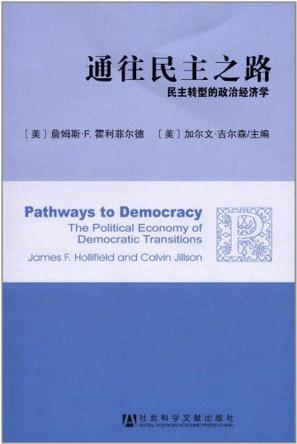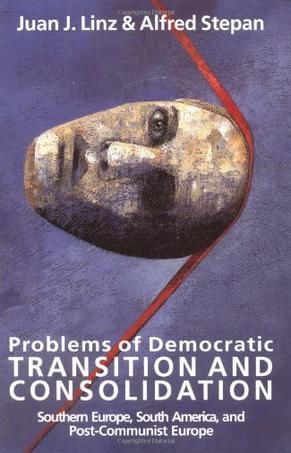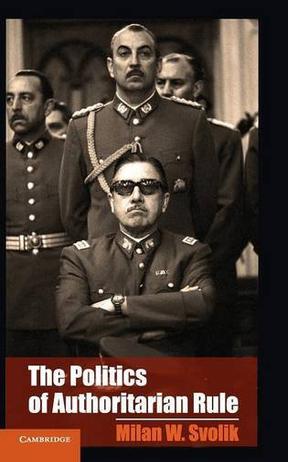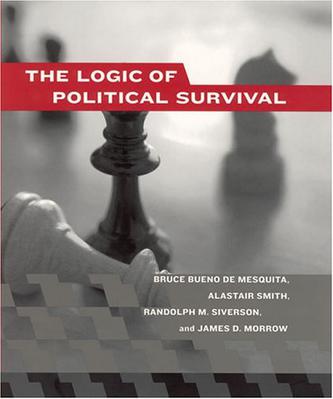-

通往民主之路
《通往民主之路:民主转型的政治经济学》讲述了,20世纪后期,人们比以往更能自由地主宰个人的命运,追求个人的经济利益。共产主义已经衰退,专制体制也在垂死挣扎。虽有偶发极端事件,但世界仍处于和平状态。这种自由民主式的和平不是基于权力制衡,而更多的是基于在自由国家的相互依赖体系和多样化的国际组织支撑下所形成的市场与权利的双重驱动。 《通往民主之路:民主转型的政治经济学》考察了不同国家——包括拉丁美洲、亚洲、东欧、非洲国家——所采取的不同民主转型路径,以及稳定新的民主体制所需要的政治和经济方案。通过分析军管体制、专制体制的寡头政治集团,揭示了统治集团内的分歧怎样推动了民主转型,统治集团外的群体和利益集团怎样发出挑战,以及为什么结果往往是经济表现不佳。本书还就美国外交政策对民主化的推动和投入问题进行了广泛探讨。 在众多有关“向民主转型”的文集中,本书不仅是最新的、最权威的,也是最好的。本书对专制体制向民主体制转型中的成功、踌躇,以及超乎想象的一面进行了比较研究,睿智、坦诚。令人耳目一新。 -

Problems of Democratic Transition and Consolidation
Since their classic volume The Breakdown of Democratic Regimes was published in 1978, Juan J. Linz and Alfred Stepan have increasingly focused on the questions of how, in the modern world, nondemocratic regimes can be eroded and democratic regimes crafted. In Problems of Democratic Transition and Consolidation, they break new ground in numerous areas. They reconceptualize the major types of modern nondemocratic regimes and point out for each type the available paths to democratic transition and the tasks of democratic consolidation. They argue that, although "nation-state" and "democracy" often have conflicting logics, multiple and complementary political identities are feasible under a common roof of state-guaranteed rights. They also illustrate how, without an effective state, there can be neither effective citizenship nor successful privatization. Further, they provide criteria and evidence for politicians and scholars alike to distinguish between democratic consolidation and pseudo-democratization, and they present conceptually driven survey data for the fourteen countries studied. Problems of Democratic Transition and Consolidation contains the first systematic comparative analysis of the process of democratic consolidation in southern Europe and the southern cone of South America, and it is the first book to ground post-Communist Europe within the literature of comparative politics and democratic theory. -

社会抗争与民主转型
本书对20世纪70年代以来的威权主义政治进行了简要分析。 第一部分 社会抗争与民主转型理论 第一章 从社会运动、革命理论到抗争政治理论 一、社会运动理论 二、革命理论 三、抗争政治理论 第二章 民主转型的条件 一、过程民主 二、合法性危机 三、经济发展 四、社会结构 五、文化 六、外部环境 第三章 民主转型的模式 一、内部协定 二、内外谈判 三、民众动员 四、社会抗争 第二部分 结构因素 第四章 政治结构 一、国家类型 二、横向权力分配 三、纵向权力分配 四、决策模式 五、政治衰败 第五章 经济与社会发展 一、发展模式 二、经济结构 三、非均衡发展 四、国家干预及其后果 第六章 社会变迁 一、动力与景观 二、阶级结构 三、公民社会 四、抗衡国家 第三部分 过程与机制 第七章 抗争动员 一、机遇螺旋 二、机遇—威胁归因 三、社会利用 四、居间联系 第八章 认同构造 一、类型塑成 二、边界激活 三、居间联系 四、对象转移 第九章 抗争转变 一、扩散与效仿 二、居间联系 三、认同改变 四、精英背叛 第四部分 结论 第十章 抗争如何促进转型 一、转型催化剂:抗争的条件 二、化学反应 三、政权抵制抗争的类型差异 参考文献 -

The Politics of Authoritarian Rule
What drives politics in dictatorships? Milan W. Svolik argues authoritarian regimes must resolve two fundamental conflicts. Dictators face threats from the masses over which they rule – the problem of authoritarian control. Secondly from the elites with whom dictators rule – the problem of authoritarian power-sharing. Using the tools of game theory, Svolik explains why some dictators establish personal autocracy and stay in power for decades; why elsewhere leadership changes are regular and institutionalized, as in contemporary China; why some dictatorships are ruled by soldiers, as Uganda was under Idi Amin; why many authoritarian regimes, such as PRI-era Mexico, maintain regime-sanctioned political parties; and why a country's authoritarian past casts a long shadow over its prospects for democracy, as the unfolding events of the Arab Spring reveal. Svolik complements these and other historical case studies with the statistical analysis on institutions, leaders and ruling coalitions across dictatorships from 1946 to 2008. -

The Logic of Political Survival
The authors of this ambitious book address a fundamental political question: why are leaders who produce peace and prosperity turned out of office while those who preside over corruption, war, and misery endure? Considering this political puzzle, they also answer the related economic question of why some countries experience successful economic development and others do not.The authors construct a provocative theory on the selection of leaders and present specific formal models from which their central claims can be deduced. They show how political leaders allocate resources and how institutions for selecting leaders create incentives for leaders to pursue good and bad public policy. They also extend the model to explain the consequences of war on political survival. Throughout the book, they provide illustrations from history, ranging from ancient Sparta to Vichy France, and test the model against statistics gathered from cross-national data. The authors explain the political intuition underlying their theory in nontechnical language, reserving formal proofs for chapter appendixes. They conclude by presenting policy prescriptions based on what has been demonstrated theoretically and empirically. -

From Dictatorship to Democracy